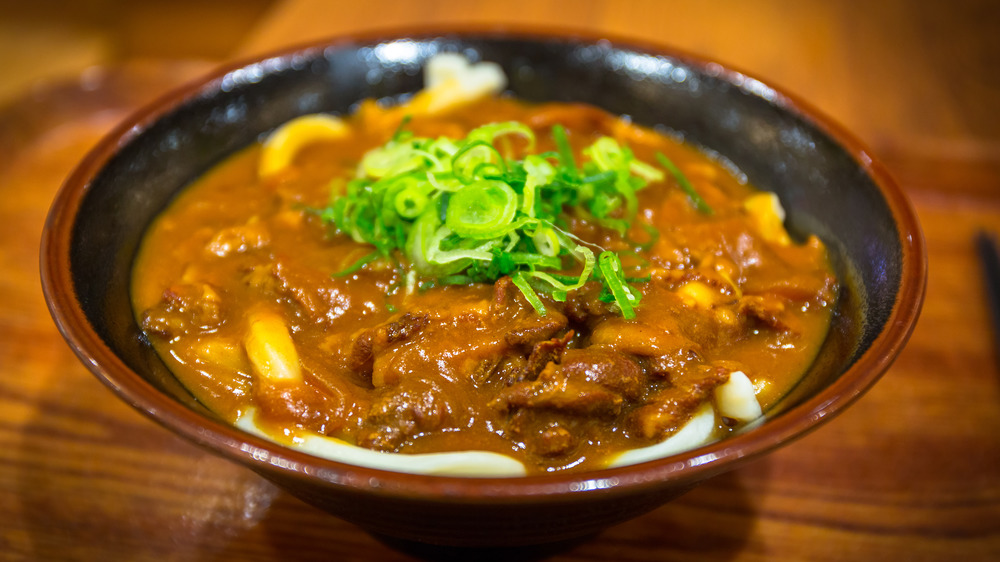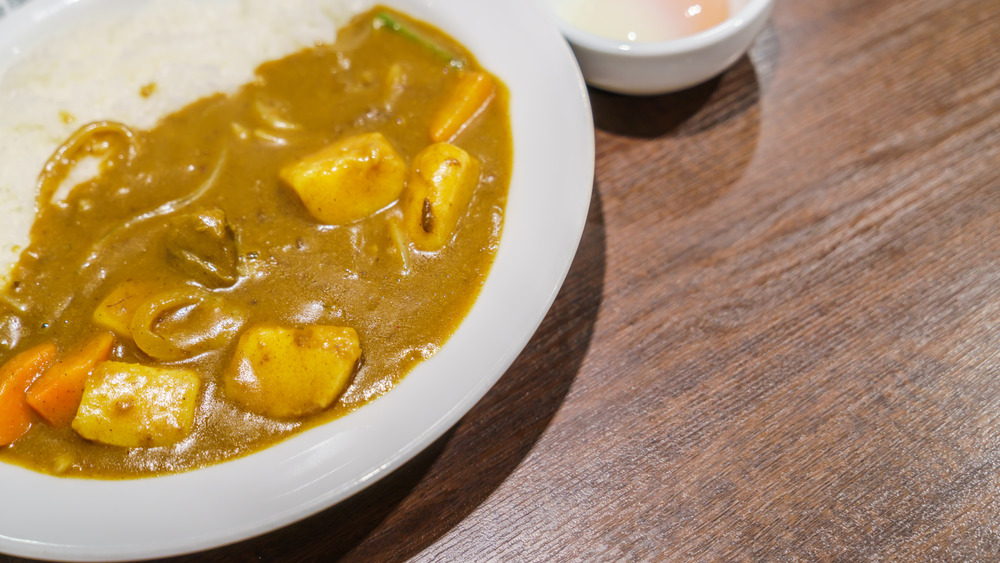The Reason Curry Is Considered A Western Food In Japan
If you're a big fan of Indian makhanis and Thai curries, the taste and mouthfeel of a Japanese curry may give you some pause for thought. The gravy, which leans in the direction of thick and sweet, is built on a combination of curry powder, caramelized onions, carrots...and grated apples, making the resulting dish mild and sweet enough for a child to enjoy.
The base for this dish is even packaged for the home cook's convenience; curry roux come in sealed cubes ready to be reconstituted at a moment's notice and served ladled on top of a protein. Curry cubes come in a range of strengths from mild to medium and hot, but even then, "hot" doesn't come close to offering the heat you might find in your favorite red, yellow, or green Thai curry (via Just One Cookbook).
No wonder then, that curry, which is also known as "kari" or "kare," is considered by some to be Japan's national dish, even more so than the sushi, tempura, and ramen, which we typically associate with the country's cuisine. It was even at the heart of a few extra-level eating competitions (via Kotaku). And even though the curry that the Japanese consume is as local as it gets, noted food writer Makiko Ito says it is still considered "yoshoku," that is, Western-style food which has been reimagined for the Japanese pantry and palate (via The Japan Times).
Japan's curry was inspired by the British Navy
Taiken says there are numerous guesses involving how curry might have made it into Japanese cuisine, and it mentions one popular guess that it was brought over by traveling Buddhists from India in 500 AD. But Atlas Obscura says curry actually arrived Japan by way of the British Royal Navy. Until curry became a thing, beriberi — or Vitamin B1 deficiency — was a common complaint among the troops, because they were consuming polished rice, which might have been a sign of wealth, but was also stripped of the essential vitamin.
Beriberi can affect the heart and circulatory system, as well as damage nerves and muscles (via Healthline), and it was such a problem it took thousands of soldiers out of action during the Russian-Japanese War. Japanese Navy leaders decided to look at what other armed forces were feeding their troops, and they settled upon British Navy's version of curry, which had flour, beef, and as a result, copious amounts of thiamine. It's sauciness even made the dish rice-friendly. The first civilian recipe for Japanese curry was published in 1872, and restaurants began including it as an offer by 1877. The rest, as they say, is food history.

